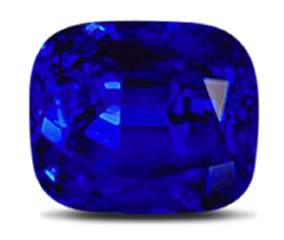
Blue Sapphire
 Sapphires belong to the family of the mineral corundum. Sapphires from Sri Lanka are still fondly referred to as Ceylon Sapphires and are widely used in engagement rings and other fine jewelry. With a hardness of 9.0, Sapphire is the second hardest natural mineral. Blue is by far the most popular color for sapphires, but they can be almost any color, including yellow, green, white, pink, orange, brown, and purple. The rarest of all is Padparadscha (also known as Padmaraga), a rare orange-pink variety of sapphire and has a higher value than blue sapphires.
Sapphires belong to the family of the mineral corundum. Sapphires from Sri Lanka are still fondly referred to as Ceylon Sapphires and are widely used in engagement rings and other fine jewelry. With a hardness of 9.0, Sapphire is the second hardest natural mineral. Blue is by far the most popular color for sapphires, but they can be almost any color, including yellow, green, white, pink, orange, brown, and purple. The rarest of all is Padparadscha (also known as Padmaraga), a rare orange-pink variety of sapphire and has a higher value than blue sapphires.
Close
Blue Sapphire
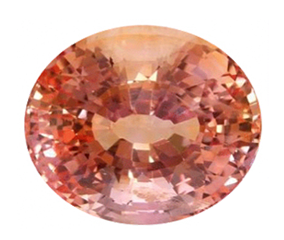
Padparadscha Sapphire
 It is called Padmaraga in Sri Lanka, but it is more commonly known as Padparadscha sapphire around the world. The name Padmaraga is derived from the Sanskrit, meaning lotus (Padma) color (Raga), signifying the vibrant mix of pink and orange tones reflected by the gemstone. Padparadscha is the rarest of all sapphires. The original locality for Padparadscha is Sri Lanka. In the Sri Lankan gem market Padparadscha sapphire tones vary from the color of a lotus which is more pink than orange, to the color of the sunset which is more orange than pink.
It is called Padmaraga in Sri Lanka, but it is more commonly known as Padparadscha sapphire around the world. The name Padmaraga is derived from the Sanskrit, meaning lotus (Padma) color (Raga), signifying the vibrant mix of pink and orange tones reflected by the gemstone. Padparadscha is the rarest of all sapphires. The original locality for Padparadscha is Sri Lanka. In the Sri Lankan gem market Padparadscha sapphire tones vary from the color of a lotus which is more pink than orange, to the color of the sunset which is more orange than pink.
Close
Padparadscha Sapphire
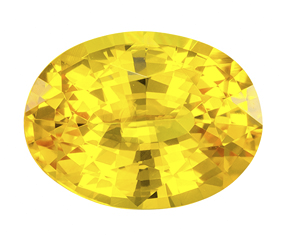
Yellow Sapphire
 In local terminology, the Yellow sapphires are identified as ‘Pushparaga’. The term pushpa means flower; as raga is color and also means pollen, hence Pushparaga is the ‘color of pollen’. Yellow sapphires are intense, bright stones varying from pale yellow to saffron yellow and from yellow slightly tinted red to a deep citron yellow.
In local terminology, the Yellow sapphires are identified as ‘Pushparaga’. The term pushpa means flower; as raga is color and also means pollen, hence Pushparaga is the ‘color of pollen’. Yellow sapphires are intense, bright stones varying from pale yellow to saffron yellow and from yellow slightly tinted red to a deep citron yellow.
Close
Yellow Sapphire
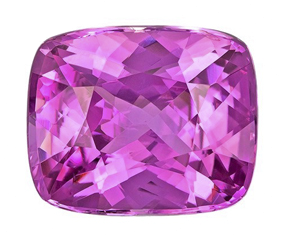
Pink Sapphire
 The Pink sapphire is one of the most beautiful and uncommon stones in the world, available in so many shades, ranging from light pink to hot pink and purplish pink. In addition to its beauty and rarity, Pink sapphires have a rich history as a sought after gem by kings and religious leaders who believed it offered protection from evil and promoted improved health. Today, Hot pink sapphires are high in demand.
The Pink sapphire is one of the most beautiful and uncommon stones in the world, available in so many shades, ranging from light pink to hot pink and purplish pink. In addition to its beauty and rarity, Pink sapphires have a rich history as a sought after gem by kings and religious leaders who believed it offered protection from evil and promoted improved health. Today, Hot pink sapphires are high in demand.
Close
Pink Sapphire
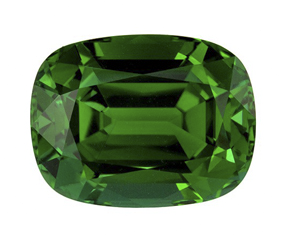
Green Sapphire
 Green sapphires are generally a strong, bright green color, ranging from green to bluish green or yellowish green pleochroism. They are not the same tone of green as the Tourmaline, Tsavorite Garnet, or Emerald, but can at first glance look very similar. The mixed oval and cushion cut are the most common, but you can sometimes find square or rectangular step cuts.
Green sapphires are generally a strong, bright green color, ranging from green to bluish green or yellowish green pleochroism. They are not the same tone of green as the Tourmaline, Tsavorite Garnet, or Emerald, but can at first glance look very similar. The mixed oval and cushion cut are the most common, but you can sometimes find square or rectangular step cuts.
Close
Green Sapphire

Ruby
 The name Ruby comes from the Latin word ‘rubeus’, literally meaning ‘red’. Like sapphires, Ruby hails from the mineral group conundrum, the difference being that Rubies are red gemstones, the color ranging from blood red to pink. This color in the precious red stones is the single most powerful factor in determining their price. The richer the color of the red rocks is, the higher is the value of the red precious stones. What is described as pigeon-blood red rubies accordingly command higher prices. Beside for its bright color, it is a most desirable gem due to its hardness, durability, luster, and rarity.
The name Ruby comes from the Latin word ‘rubeus’, literally meaning ‘red’. Like sapphires, Ruby hails from the mineral group conundrum, the difference being that Rubies are red gemstones, the color ranging from blood red to pink. This color in the precious red stones is the single most powerful factor in determining their price. The richer the color of the red rocks is, the higher is the value of the red precious stones. What is described as pigeon-blood red rubies accordingly command higher prices. Beside for its bright color, it is a most desirable gem due to its hardness, durability, luster, and rarity.
Close
Ruby
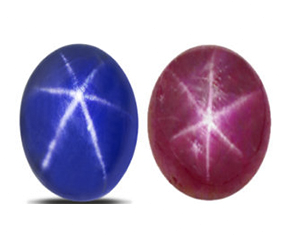
Star Stone
 Star stones of the corundum family are either Star sapphires or rubies. Sri Lanka is the best-known source for Star sapphires and Star rubies. When light falls on these stones, a star effect is visible (known as asterism). Star sapphires range in color from grey to bluish-grey and from medium blue to medium dark blue. The very slightly purplish medium dark blue is the best color grade for star sapphires. Star rubies range from light pink-red to purple-red through deep purple-red. The intense Red star rubies are extremely rare. When these stones cut ‘Cabochon’, displays a special reflection effect in the form of a six, or in rare instances a twelve rayed star on the cabochon surface. A good quality star stone should have a high degree of transparency and a well-defined star with no weak or missing rays.
Star stones of the corundum family are either Star sapphires or rubies. Sri Lanka is the best-known source for Star sapphires and Star rubies. When light falls on these stones, a star effect is visible (known as asterism). Star sapphires range in color from grey to bluish-grey and from medium blue to medium dark blue. The very slightly purplish medium dark blue is the best color grade for star sapphires. Star rubies range from light pink-red to purple-red through deep purple-red. The intense Red star rubies are extremely rare. When these stones cut ‘Cabochon’, displays a special reflection effect in the form of a six, or in rare instances a twelve rayed star on the cabochon surface. A good quality star stone should have a high degree of transparency and a well-defined star with no weak or missing rays.
Close
Star Stone
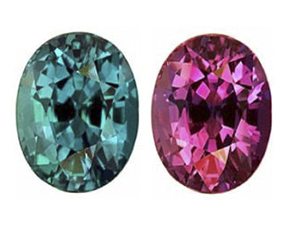
Alexandrite
 Alexandrite is a variety of Chrysoberyl is perhaps rarest and Sri Lanka is famous for producing larger stones with fair color change. It is one of the most desired gems. The primary beauty of this gem is due to its color change. Alexandrite is green or bluish-green in daylight, changing to raspberry red or violet red in incandescent light. Its dramatic color change is sometimes described as “emerald by day, ruby by night.” The gem is priced according the percentage of color change found in the stone. Although most Alexandrite can be faceted, occasionally there is unusual color changing Alexandrite cat’s eye too.
Alexandrite is a variety of Chrysoberyl is perhaps rarest and Sri Lanka is famous for producing larger stones with fair color change. It is one of the most desired gems. The primary beauty of this gem is due to its color change. Alexandrite is green or bluish-green in daylight, changing to raspberry red or violet red in incandescent light. Its dramatic color change is sometimes described as “emerald by day, ruby by night.” The gem is priced according the percentage of color change found in the stone. Although most Alexandrite can be faceted, occasionally there is unusual color changing Alexandrite cat’s eye too.
Close
Alexandrite
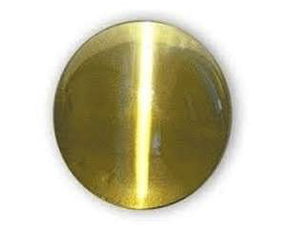
Cat’s Eye
 A Cat’s eye like effect, known as ‘chatoyancy’, appears to move on this stone’s surface. Cat’s eye is a gem variety of Chrysoberyl. There are generally two varieties of cat’s eye; the Alexandrite cat’s eye and the Chrysoberyl cat’s eye. The ideal colors of the Chrysoberyl Cat’s Eye are yellowish-brown, which is called the honey color, and the yellow-green, which is called the apple green color. A very good Cat’s eye, apart from being of ideal color, should have a high degree of transparency and a well-defined unbroken ray. It should be free from any distracting inclusions visible to the unaided eye.
A Cat’s eye like effect, known as ‘chatoyancy’, appears to move on this stone’s surface. Cat’s eye is a gem variety of Chrysoberyl. There are generally two varieties of cat’s eye; the Alexandrite cat’s eye and the Chrysoberyl cat’s eye. The ideal colors of the Chrysoberyl Cat’s Eye are yellowish-brown, which is called the honey color, and the yellow-green, which is called the apple green color. A very good Cat’s eye, apart from being of ideal color, should have a high degree of transparency and a well-defined unbroken ray. It should be free from any distracting inclusions visible to the unaided eye.
Close
Cat’s Eye
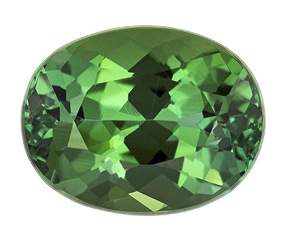
Tourmaline
 Tourmaline which is known as ‘the gemstone of the rainbow’, is the most colorful of all gemstones. The name Tourmaline comes from the Singhalese words ‘tura mali’. In translation, this means ‘stone with mixed colors’, referring to the color spectrum of this gemstone, which outdoes that of all other precious stones. There are Tourmalines from red to green and from blue to yellow. Out of all colors of Tourmaline pink, red, green, blue, multicolored and especially watermelon color are well-known. There are Tourmalines which change their color when the light changes from daylight to artificial light, and some show the light effect of Cat’s eye. Tourmaline is found in a variety of colors in Sri Lanka.
Tourmaline which is known as ‘the gemstone of the rainbow’, is the most colorful of all gemstones. The name Tourmaline comes from the Singhalese words ‘tura mali’. In translation, this means ‘stone with mixed colors’, referring to the color spectrum of this gemstone, which outdoes that of all other precious stones. There are Tourmalines from red to green and from blue to yellow. Out of all colors of Tourmaline pink, red, green, blue, multicolored and especially watermelon color are well-known. There are Tourmalines which change their color when the light changes from daylight to artificial light, and some show the light effect of Cat’s eye. Tourmaline is found in a variety of colors in Sri Lanka.
Close
Tourmaline
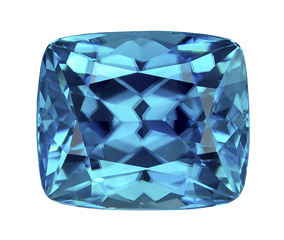
Zircon
 Zircon is a zirconium silicate, occurring in colorless, light blue, brownish-orange, yellow, yellowish-green, brownish-green, dark red or light red-violet. Zircons of all colors are used as gems, but blue, golden-brown, and white are the colors most often used. Blue zircon, the most popular color, has a lively pastel blue, and occasionally has a very desirable striking bright blue color.
Zircon is a zirconium silicate, occurring in colorless, light blue, brownish-orange, yellow, yellowish-green, brownish-green, dark red or light red-violet. Zircons of all colors are used as gems, but blue, golden-brown, and white are the colors most often used. Blue zircon, the most popular color, has a lively pastel blue, and occasionally has a very desirable striking bright blue color.
Close
Zircon
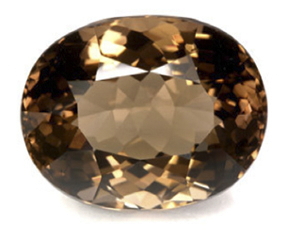
Quartz
 Quartz which is the most common mineral found on the face of the Earth. Gem varieties includes Amethyst (purple), Citrine (yellow), Milky quartz (cloudy, white variety), Rock crystal (clear variety), Rose quartz (pink to reddish-pink variety), and Smokey quartz (brown to grey variety). A transparent variety of Quartz, silicon dioxide, occurring in yellow to red-orange to orange-brown. The name is derived from citron, which is French for lemon. Madeira (deep, bright reddish-brown) and Palmyra (medium yellowish-brown) are terms used in the trade.
Quartz which is the most common mineral found on the face of the Earth. Gem varieties includes Amethyst (purple), Citrine (yellow), Milky quartz (cloudy, white variety), Rock crystal (clear variety), Rose quartz (pink to reddish-pink variety), and Smokey quartz (brown to grey variety). A transparent variety of Quartz, silicon dioxide, occurring in yellow to red-orange to orange-brown. The name is derived from citron, which is French for lemon. Madeira (deep, bright reddish-brown) and Palmyra (medium yellowish-brown) are terms used in the trade.
Close
Quartz
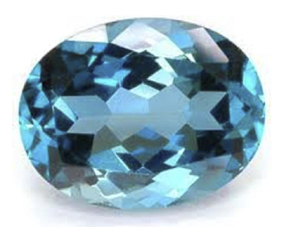
Topaz
 The name Topaz comes from the Sanskrit and means ‘fire’. Topaz is a fluo-silicate of aluminum, occurring in a wide range of colors including transparent yellow, yellow-brown, orange-brown, light to almost medium red, very light to light blue, very light green and violet colors.. Red is extremely rare. Of the color varieties of Topaz, the most commonly used colors in jewelry are the blue types. Among the blue varieties, pure blue, greenish-blue and bluish varieties are known.
The name Topaz comes from the Sanskrit and means ‘fire’. Topaz is a fluo-silicate of aluminum, occurring in a wide range of colors including transparent yellow, yellow-brown, orange-brown, light to almost medium red, very light to light blue, very light green and violet colors.. Red is extremely rare. Of the color varieties of Topaz, the most commonly used colors in jewelry are the blue types. Among the blue varieties, pure blue, greenish-blue and bluish varieties are known.
Close
Topaz
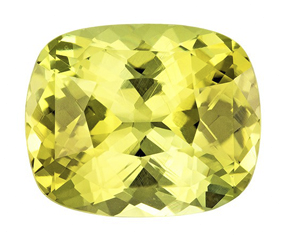
Chrysoberyl
 The name Chrysoberyl comes from the Greek, meaning ‘golden beryl’. The ideal colors of Chrysoberyl are yellow, golden yellow, brownish yellow, yellowish reen, bluish green and faint olive green. It is most often a lightly colored gemstone, though increased color saturation will increase its value. Chrysoberyl gemstones are often free of flaws. The classification of chrysoberyl into varieties depends on colour, colour changing properties, inclusions and reflection effects these could produce.
The name Chrysoberyl comes from the Greek, meaning ‘golden beryl’. The ideal colors of Chrysoberyl are yellow, golden yellow, brownish yellow, yellowish reen, bluish green and faint olive green. It is most often a lightly colored gemstone, though increased color saturation will increase its value. Chrysoberyl gemstones are often free of flaws. The classification of chrysoberyl into varieties depends on colour, colour changing properties, inclusions and reflection effects these could produce.
Close
Chrysoberyl
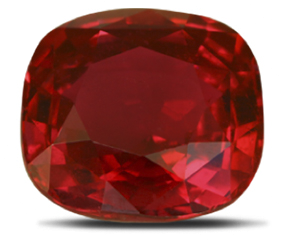
Garnet
 Garnets come in a variety of colors and have many different varieties including the Pyrope (reddish brown), Rhodolite (purplish red), Tsavorite/ Demantoid (green), Spessartite (mandarin orange), Mali (yellow) and Hessonite (orangey brown). However, the most widely-known color is red and they are very affordable. The rare green Tsavorite and Demantoid garnets make exquisite and costly gemstones. Garnets occasionally display asterism in the form of four-rayed stars. However, Star garnets are very rare.
Garnets come in a variety of colors and have many different varieties including the Pyrope (reddish brown), Rhodolite (purplish red), Tsavorite/ Demantoid (green), Spessartite (mandarin orange), Mali (yellow) and Hessonite (orangey brown). However, the most widely-known color is red and they are very affordable. The rare green Tsavorite and Demantoid garnets make exquisite and costly gemstones. Garnets occasionally display asterism in the form of four-rayed stars. However, Star garnets are very rare.
Close
Garnet
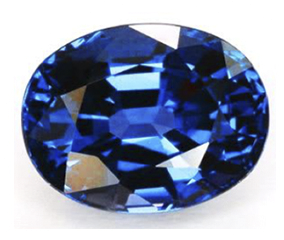
Spinel
 The name Spinel is derived from the Greek ‘spinther’ which means ‘sparkling’. The colors in which Spinel occurs are red, pink, orange, shades of reddish-purple, blue, bluishgreen, mauve and colorless. Some Spinel colors are more rare and valuable than others. In general, Red spinel is the most desirable, followed by fine Cobalt-blue spinel, then by vibrant hot pink and vivid orange stones. Mauve and bluish purple to purple, or lavender, stones tend to be less attractive, and less in demand than other, rarer colors.
The name Spinel is derived from the Greek ‘spinther’ which means ‘sparkling’. The colors in which Spinel occurs are red, pink, orange, shades of reddish-purple, blue, bluishgreen, mauve and colorless. Some Spinel colors are more rare and valuable than others. In general, Red spinel is the most desirable, followed by fine Cobalt-blue spinel, then by vibrant hot pink and vivid orange stones. Mauve and bluish purple to purple, or lavender, stones tend to be less attractive, and less in demand than other, rarer colors.
Close
Spinel
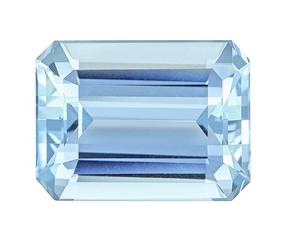
Aquamarine
 The word Aquamarine is derived from the Latin word for seawater because the colors can range from shades of greenblue to blue. Aquamarine is a member of the Beryl family. The shades of blue displayed range from almost colorless pale blue to bright sea blue. The depth of color is most intense in large stones. The color in smaller stones is comparatively lighter.
The word Aquamarine is derived from the Latin word for seawater because the colors can range from shades of greenblue to blue. Aquamarine is a member of the Beryl family. The shades of blue displayed range from almost colorless pale blue to bright sea blue. The depth of color is most intense in large stones. The color in smaller stones is comparatively lighter.
Close
Aquamarine

Blue Sapphire
 Sapphires belong to the family of the mineral corundum. Sapphires from Sri Lanka are still fondly referred to as Ceylon Sapphires and are widely used in engagement rings and other fine jewelry. With a hardness of 9.0, Sapphire is the second hardest natural mineral. Blue is by far the most popular color for sapphires, but they can be almost any color, including yellow, green, white, pink, orange, brown, and purple. The rarest of all is Padparadscha (also known as Padmaraga), a rare orange-pink variety of sapphire and has a higher value than blue sapphires.
Sapphires belong to the family of the mineral corundum. Sapphires from Sri Lanka are still fondly referred to as Ceylon Sapphires and are widely used in engagement rings and other fine jewelry. With a hardness of 9.0, Sapphire is the second hardest natural mineral. Blue is by far the most popular color for sapphires, but they can be almost any color, including yellow, green, white, pink, orange, brown, and purple. The rarest of all is Padparadscha (also known as Padmaraga), a rare orange-pink variety of sapphire and has a higher value than blue sapphires.
Close
Blue Sapphire

Padparadscha Sapphire
 It is called Padmaraga in Sri Lanka, but it is more commonly known as Padparadscha sapphire around the world. The name Padmaraga is derived from the Sanskrit, meaning lotus (Padma) color (Raga), signifying the vibrant mix of pink and orange tones reflected by the gemstone. Padparadscha is the rarest of all sapphires. The original locality for Padparadscha is Sri Lanka. In the Sri Lankan gem market Padparadscha sapphire tones vary from the color of a lotus which is more pink than orange, to the color of the sunset which is more orange than pink.
It is called Padmaraga in Sri Lanka, but it is more commonly known as Padparadscha sapphire around the world. The name Padmaraga is derived from the Sanskrit, meaning lotus (Padma) color (Raga), signifying the vibrant mix of pink and orange tones reflected by the gemstone. Padparadscha is the rarest of all sapphires. The original locality for Padparadscha is Sri Lanka. In the Sri Lankan gem market Padparadscha sapphire tones vary from the color of a lotus which is more pink than orange, to the color of the sunset which is more orange than pink.
Close
Padparadscha Sapphire

Yellow Sapphire
 In local terminology, the Yellow sapphires are identified as ‘Pushparaga’. The term pushpa means flower; as raga is color and also means pollen, hence Pushparaga is the ‘color of pollen’. Yellow sapphires are intense, bright stones varying from pale yellow to saffron yellow and from yellow slightly tinted red to a deep citron yellow.
In local terminology, the Yellow sapphires are identified as ‘Pushparaga’. The term pushpa means flower; as raga is color and also means pollen, hence Pushparaga is the ‘color of pollen’. Yellow sapphires are intense, bright stones varying from pale yellow to saffron yellow and from yellow slightly tinted red to a deep citron yellow.
Close
Yellow Sapphire

Pink Sapphire
 The Pink sapphire is one of the most beautiful and uncommon stones in the world, available in so many shades, ranging from light pink to hot pink and purplish pink. In addition to its beauty and rarity, Pink sapphires have a rich history as a sought after gem by kings and religious leaders who believed it offered protection from evil and promoted improved health. Today, Hot pink sapphires are high in demand.
The Pink sapphire is one of the most beautiful and uncommon stones in the world, available in so many shades, ranging from light pink to hot pink and purplish pink. In addition to its beauty and rarity, Pink sapphires have a rich history as a sought after gem by kings and religious leaders who believed it offered protection from evil and promoted improved health. Today, Hot pink sapphires are high in demand.
Close
Pink Sapphire

Green Sapphire
 Green sapphires are generally a strong, bright green color, ranging from green to bluish green or yellowish green pleochroism. They are not the same tone of green as the Tourmaline, Tsavorite Garnet, or Emerald, but can at first glance look very similar. The mixed oval and cushion cut are the most common, but you can sometimes find square or rectangular step cuts.
Green sapphires are generally a strong, bright green color, ranging from green to bluish green or yellowish green pleochroism. They are not the same tone of green as the Tourmaline, Tsavorite Garnet, or Emerald, but can at first glance look very similar. The mixed oval and cushion cut are the most common, but you can sometimes find square or rectangular step cuts.
Close
Green Sapphire

Ruby
 The name Ruby comes from the Latin word ‘rubeus’, literally meaning ‘red’. Like sapphires, Ruby hails from the mineral group conundrum, the difference being that Rubies are red gemstones, the color ranging from blood red to pink. This color in the precious red stones is the single most powerful factor in determining their price. The richer the color of the red rocks is, the higher is the value of the red precious stones. What is described as pigeon-blood red rubies accordingly command higher prices. Beside for its bright color, it is a most desirable gem due to its hardness, durability, luster, and rarity.
The name Ruby comes from the Latin word ‘rubeus’, literally meaning ‘red’. Like sapphires, Ruby hails from the mineral group conundrum, the difference being that Rubies are red gemstones, the color ranging from blood red to pink. This color in the precious red stones is the single most powerful factor in determining their price. The richer the color of the red rocks is, the higher is the value of the red precious stones. What is described as pigeon-blood red rubies accordingly command higher prices. Beside for its bright color, it is a most desirable gem due to its hardness, durability, luster, and rarity.
Close
Ruby

Star Stone
 Star stones of the corundum family are either Star sapphires or rubies. Sri Lanka is the best-known source for Star sapphires and Star rubies. When light falls on these stones, a star effect is visible (known as asterism). Star sapphires range in color from grey to bluish-grey and from medium blue to medium dark blue. The very slightly purplish medium dark blue is the best color grade for star sapphires. Star rubies range from light pink-red to purple-red through deep purple-red. The intense Red star rubies are extremely rare. When these stones cut ‘Cabochon’, displays a special reflection effect in the form of a six, or in rare instances a twelve rayed star on the cabochon surface. A good quality star stone should have a high degree of transparency and a well-defined star with no weak or missing rays.
Star stones of the corundum family are either Star sapphires or rubies. Sri Lanka is the best-known source for Star sapphires and Star rubies. When light falls on these stones, a star effect is visible (known as asterism). Star sapphires range in color from grey to bluish-grey and from medium blue to medium dark blue. The very slightly purplish medium dark blue is the best color grade for star sapphires. Star rubies range from light pink-red to purple-red through deep purple-red. The intense Red star rubies are extremely rare. When these stones cut ‘Cabochon’, displays a special reflection effect in the form of a six, or in rare instances a twelve rayed star on the cabochon surface. A good quality star stone should have a high degree of transparency and a well-defined star with no weak or missing rays.
Close
Star Stone

Alexandrite
 Alexandrite is a variety of Chrysoberyl is perhaps rarest and Sri Lanka is famous for producing larger stones with fair color change. It is one of the most desired gems. The primary beauty of this gem is due to its color change. Alexandrite is green or bluish-green in daylight, changing to raspberry red or violet red in incandescent light. Its dramatic color change is sometimes described as “emerald by day, ruby by night.” The gem is priced according the percentage of color change found in the stone. Although most Alexandrite can be faceted, occasionally there is unusual color changing Alexandrite cat’s eye too.
Alexandrite is a variety of Chrysoberyl is perhaps rarest and Sri Lanka is famous for producing larger stones with fair color change. It is one of the most desired gems. The primary beauty of this gem is due to its color change. Alexandrite is green or bluish-green in daylight, changing to raspberry red or violet red in incandescent light. Its dramatic color change is sometimes described as “emerald by day, ruby by night.” The gem is priced according the percentage of color change found in the stone. Although most Alexandrite can be faceted, occasionally there is unusual color changing Alexandrite cat’s eye too.
Close
Alexandrite

Cat’s Eye
 A Cat’s eye like effect, known as ‘chatoyancy’, appears to move on this stone’s surface. Cat’s eye is a gem variety of Chrysoberyl. There are generally two varieties of cat’s eye; the Alexandrite cat’s eye and the Chrysoberyl cat’s eye. The ideal colors of the Chrysoberyl Cat’s Eye are yellowish-brown, which is called the honey color, and the yellow-green, which is called the apple green color. A very good Cat’s eye, apart from being of ideal color, should have a high degree of transparency and a well-defined unbroken ray. It should be free from any distracting inclusions visible to the unaided eye.
A Cat’s eye like effect, known as ‘chatoyancy’, appears to move on this stone’s surface. Cat’s eye is a gem variety of Chrysoberyl. There are generally two varieties of cat’s eye; the Alexandrite cat’s eye and the Chrysoberyl cat’s eye. The ideal colors of the Chrysoberyl Cat’s Eye are yellowish-brown, which is called the honey color, and the yellow-green, which is called the apple green color. A very good Cat’s eye, apart from being of ideal color, should have a high degree of transparency and a well-defined unbroken ray. It should be free from any distracting inclusions visible to the unaided eye.
Close
Cat’s Eye

Tourmaline
 Tourmaline which is known as ‘the gemstone of the rainbow’, is the most colorful of all gemstones. The name Tourmaline comes from the Singhalese words ‘tura mali’. In translation, this means ‘stone with mixed colors’, referring to the color spectrum of this gemstone, which outdoes that of all other precious stones. There are Tourmalines from red to green and from blue to yellow. Out of all colors of Tourmaline pink, red, green, blue, multicolored and especially watermelon color are well-known. There are Tourmalines which change their color when the light changes from daylight to artificial light, and some show the light effect of Cat’s eye. Tourmaline is found in a variety of colors in Sri Lanka.
Tourmaline which is known as ‘the gemstone of the rainbow’, is the most colorful of all gemstones. The name Tourmaline comes from the Singhalese words ‘tura mali’. In translation, this means ‘stone with mixed colors’, referring to the color spectrum of this gemstone, which outdoes that of all other precious stones. There are Tourmalines from red to green and from blue to yellow. Out of all colors of Tourmaline pink, red, green, blue, multicolored and especially watermelon color are well-known. There are Tourmalines which change their color when the light changes from daylight to artificial light, and some show the light effect of Cat’s eye. Tourmaline is found in a variety of colors in Sri Lanka.
Close
Tourmaline

Zircon
 Zircon is a zirconium silicate, occurring in colorless, light blue, brownish-orange, yellow, yellowish-green, brownish-green, dark red or light red-violet. Zircons of all colors are used as gems, but blue, golden-brown, and white are the colors most often used. Blue zircon, the most popular color, has a lively pastel blue, and occasionally has a very desirable striking bright blue color.
Zircon is a zirconium silicate, occurring in colorless, light blue, brownish-orange, yellow, yellowish-green, brownish-green, dark red or light red-violet. Zircons of all colors are used as gems, but blue, golden-brown, and white are the colors most often used. Blue zircon, the most popular color, has a lively pastel blue, and occasionally has a very desirable striking bright blue color.
Close
Zircon

Quartz
 Quartz which is the most common mineral found on the face of the Earth. Gem varieties includes Amethyst (purple), Citrine (yellow), Milky quartz (cloudy, white variety), Rock crystal (clear variety), Rose quartz (pink to reddish-pink variety), and Smokey quartz (brown to grey variety). A transparent variety of Quartz, silicon dioxide, occurring in yellow to red-orange to orange-brown. The name is derived from citron, which is French for lemon. Madeira (deep, bright reddish-brown) and Palmyra (medium yellowish-brown) are terms used in the trade.
Quartz which is the most common mineral found on the face of the Earth. Gem varieties includes Amethyst (purple), Citrine (yellow), Milky quartz (cloudy, white variety), Rock crystal (clear variety), Rose quartz (pink to reddish-pink variety), and Smokey quartz (brown to grey variety). A transparent variety of Quartz, silicon dioxide, occurring in yellow to red-orange to orange-brown. The name is derived from citron, which is French for lemon. Madeira (deep, bright reddish-brown) and Palmyra (medium yellowish-brown) are terms used in the trade.
Close
Quartz

Topaz
 The name Topaz comes from the Sanskrit and means ‘fire’. Topaz is a fluo-silicate of aluminum, occurring in a wide range of colors including transparent yellow, yellow-brown, orange-brown, light to almost medium red, very light to light blue, very light green and violet colors.. Red is extremely rare. Of the color varieties of Topaz, the most commonly used colors in jewelry are the blue types. Among the blue varieties, pure blue, greenish-blue and bluish varieties are known.
The name Topaz comes from the Sanskrit and means ‘fire’. Topaz is a fluo-silicate of aluminum, occurring in a wide range of colors including transparent yellow, yellow-brown, orange-brown, light to almost medium red, very light to light blue, very light green and violet colors.. Red is extremely rare. Of the color varieties of Topaz, the most commonly used colors in jewelry are the blue types. Among the blue varieties, pure blue, greenish-blue and bluish varieties are known.
Close
Topaz

Chrysoberyl
 The name Chrysoberyl comes from the Greek, meaning ‘golden beryl’. The ideal colors of Chrysoberyl are yellow, golden yellow, brownish yellow, yellowish reen, bluish green and faint olive green. It is most often a lightly colored gemstone, though increased color saturation will increase its value. Chrysoberyl gemstones are often free of flaws. The classification of chrysoberyl into varieties depends on colour, colour changing properties, inclusions and reflection effects these could produce.
The name Chrysoberyl comes from the Greek, meaning ‘golden beryl’. The ideal colors of Chrysoberyl are yellow, golden yellow, brownish yellow, yellowish reen, bluish green and faint olive green. It is most often a lightly colored gemstone, though increased color saturation will increase its value. Chrysoberyl gemstones are often free of flaws. The classification of chrysoberyl into varieties depends on colour, colour changing properties, inclusions and reflection effects these could produce.
Close
Chrysoberyl

Garnet
 Garnets come in a variety of colors and have many different varieties including the Pyrope (reddish brown), Rhodolite (purplish red), Tsavorite/ Demantoid (green), Spessartite (mandarin orange), Mali (yellow) and Hessonite (orangey brown). However, the most widely-known color is red and they are very affordable. The rare green Tsavorite and Demantoid garnets make exquisite and costly gemstones. Garnets occasionally display asterism in the form of four-rayed stars. However, Star garnets are very rare.
Garnets come in a variety of colors and have many different varieties including the Pyrope (reddish brown), Rhodolite (purplish red), Tsavorite/ Demantoid (green), Spessartite (mandarin orange), Mali (yellow) and Hessonite (orangey brown). However, the most widely-known color is red and they are very affordable. The rare green Tsavorite and Demantoid garnets make exquisite and costly gemstones. Garnets occasionally display asterism in the form of four-rayed stars. However, Star garnets are very rare.
Close
Garnet

Spinel
 The name Spinel is derived from the Greek ‘spinther’ which means ‘sparkling’. The colors in which Spinel occurs are red, pink, orange, shades of reddish-purple, blue, bluishgreen, mauve and colorless. Some Spinel colors are more rare and valuable than others. In general, Red spinel is the most desirable, followed by fine Cobalt-blue spinel, then by vibrant hot pink and vivid orange stones. Mauve and bluish purple to purple, or lavender, stones tend to be less attractive, and less in demand than other, rarer colors.
The name Spinel is derived from the Greek ‘spinther’ which means ‘sparkling’. The colors in which Spinel occurs are red, pink, orange, shades of reddish-purple, blue, bluishgreen, mauve and colorless. Some Spinel colors are more rare and valuable than others. In general, Red spinel is the most desirable, followed by fine Cobalt-blue spinel, then by vibrant hot pink and vivid orange stones. Mauve and bluish purple to purple, or lavender, stones tend to be less attractive, and less in demand than other, rarer colors.
Close
Spinel

Aquamarine
 The word Aquamarine is derived from the Latin word for seawater because the colors can range from shades of greenblue to blue. Aquamarine is a member of the Beryl family. The shades of blue displayed range from almost colorless pale blue to bright sea blue. The depth of color is most intense in large stones. The color in smaller stones is comparatively lighter.
The word Aquamarine is derived from the Latin word for seawater because the colors can range from shades of greenblue to blue. Aquamarine is a member of the Beryl family. The shades of blue displayed range from almost colorless pale blue to bright sea blue. The depth of color is most intense in large stones. The color in smaller stones is comparatively lighter.
Close



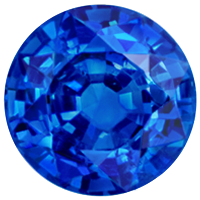 BLUE SAPPHIRE
BLUE SAPPHIRE 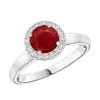
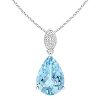
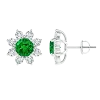
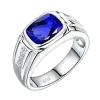





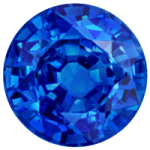 Blue Sapphire
Blue Sapphire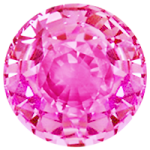 Pink Sapphire
Pink Sapphire Yellow Sapphire
Yellow Sapphire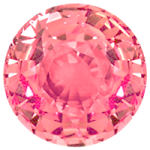 Padparadscha Sapphire
Padparadscha Sapphire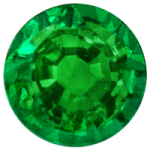 Green Sapphire
Green Sapphire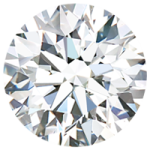 White Sapphire
White Sapphire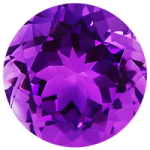 Amethyst
Amethyst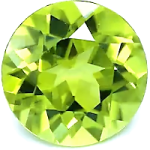 Peridot
Peridot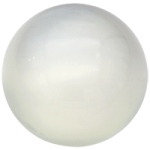 Moonstone
Moonstone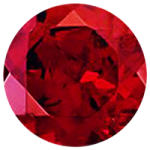 Garnet
Garnet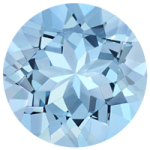 Aquamarine
Aquamarine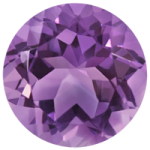 Spinel
Spinel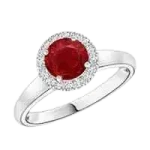 Ladies Rings
Ladies Rings Pendants
Pendants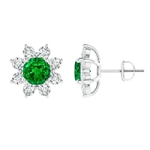 Earrings
Earrings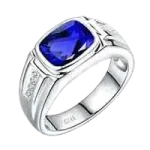 Gent’s Rings
Gent’s Rings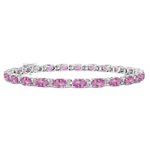 Bracelet
Bracelet